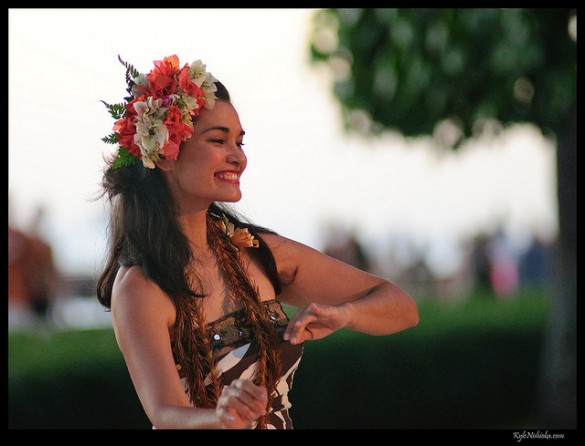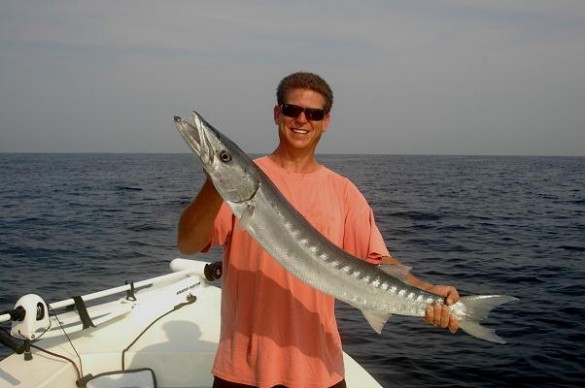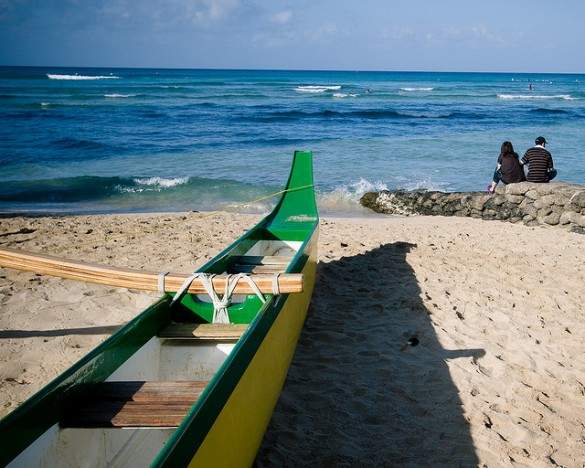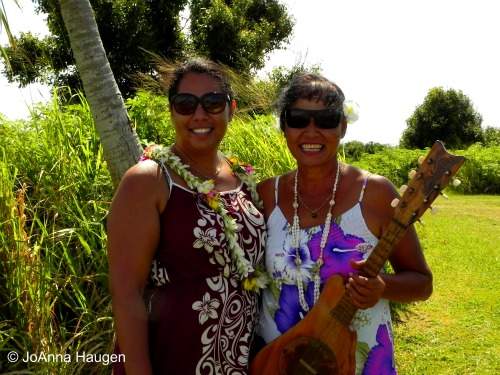If you’ve never heard of the Cook Islands before, or you’re only vaguely familiar with them because of Survivor, you aren’t alone. This South Pacific country, made up of 15 islands scattered over a swath of ocean larger than continental Europe, has a total population of about 15,000 people, and it is often overshadowed by its neighbors Fiji and Tahiti.
The awesome thing about traveling to a relatively unknown destination, though, is that you don’t have to vie for space with other travelers, and the locals are excited to introduce you to their home. Though the cultural history of the Cook Islands is a bit contested (did their ancestors come from Hawaii or New Zealand?), the islanders have created their own set of traditions over the years, many of which you can observe, appreciate and participate in.
Dance and music

Like many Polynesian nations, the Cook Islands has a strong tradition of song and dance. The local dance, known as the Ura, tells a story that matches the words of the accompanying song. At the heart of the music in the Cook Islands is a heavy rhythmic drumming that allows the dancers—who pound out the beat with bare feet and are adorned in flowers and palm fronds—to keep time with the music.
How you can take part:
There are many places where you can watch the locals sing and dance. Some of the hotels offer shows and, on Rarotonga, you can spend an evening at Te Vara Nui, where performances showcase a story told through movement and music. These may feel a bit staged at first, but the dancers often invite audience members to join them at the end of the performance, and it’s when you get the chance to meet them face-to-face that you realize this is a true passion of theirs. Also, if you happen to visit during the month of April, catch the Te Mire Kapa “Dancer of the Year” contests, which highlight men, women, boys and girls competing in several categories of dance. Spectators are welcome. Like many traditions in the Cook Islands, each island has developed its own form of song and dance over the years, so visitors who hop from one patch of land to another will be treated with the local variation.
Straight-from-the-sea food

A lot of the food that feeds those in the Cook Islands comes straight from the Pacific Ocean. As a result, seafood of some sort is bound to be on the table at just about every meal. Lobster, octopus and local fish appear on most menus, as does a selection of fresh fruit. Though mangoes and star fruit make an appearance in season, coconut and papaya (known locally as “pawpaw”) are a given any time you sit down to dine.
How you can take part:
A few companies in the Cook Islands offer deep-sea fishing excursions for interested visitors. Though it’s not guaranteed you’ll catch anything, it’s not uncommon to snag a barracuda or wahoo. Regardless of whether you’re an angler or not, take advantage of juicy seafood and flavorful fruit when you can. If you’re looking for the island dish, try the ika mata, which is made with fresh yellow fin tuna lightly marinated in coconut cream and lemon. The basics of the recipe are the same regardless of where you order it, but every restaurant and family has their own variation on the theme.
The Vaka

Vakas are the outrigger canoes that are plentiful across the Cook Islands. Children pile into them after school and island teams practice their strokes for friendly competitions. Though it seems simple to push these long boats through the water, looks can be deceiving. The oar stroke is not just a simple line through the water but a perfectly executed “J” curve.
How you can take part:
This is where the Cook Islands shows its true colors. On a recent visit to the country, I wanted to figure out how, exactly, a person could learn to paddle a vaka. Were there lessons available, or perhaps there was a company that took visitors out onto the open water in one of these boats? Nope, these things don’t exist. Instead, if you’d like to learn more about the history of this sport or even give it a go yourself, simply ask the locals who are milling around a boat onshore and are preparing to take it out for a ride. Many will be happy to let you ride, and chances are you’ll even get a personal paddling lesson. If you can’t work up the courage to do that, make plans to check out the Vake Eiva, an annual open ocean race that draws paddlers from around the world.
For the love of flowers
Upon arriving in Rarotonga, you’ll likely be given a lei (an “aei” in Maori). This necklace of flowers will be strung with buds bursting with aroma that were plucked from the bushes just hours before your plane landed. But this isn’t just an arrival gift. Look around the Cook Islands and you’ll notice that both men and women wear aeis and flowers tucked behind their ears or in their hair all the time. The people of the Cook Islands definitely embrace their tropical locale.
How you can take part:
Pluck a flower and join the crowd! It’s perfectly acceptable to take a flower from any bush that appeals to you. Though there is no particular meaning regarding what types or colors of flowers adorn your hair, rumor has it that tucking a flower behind your right ear indicates that you’re in a relationship while wearing one on the left side means you’re available for a relationship.
From the first aei you’ll receive when you step off the plane in Rarotonga to the ika mata served in a carved up coconut, the traditions of the Cook Islands await at every turn. Simply tuck a flower behind your ear and allow yourself to become a part of the culture … if only for a short while.
Ready to go? Search for airfare to Rarotonga, find hostels in the Cook Islands, or read more about travel to remote islands:
- 7 Excellent Small Islands You’ve Probably Never Heard Of
- Around the World in 7 Lesser-Known Islands
- 6 of the Most Remote Islands in the World
- 5 of the World’s Best Kept Secret Destinations
Disclaimer: This trip was sponsored by the Cook Islands Tourism Board but all opinions are the author’s own.
Photos by: 1, 2, 3, final photo by the author and may not be used without permission
